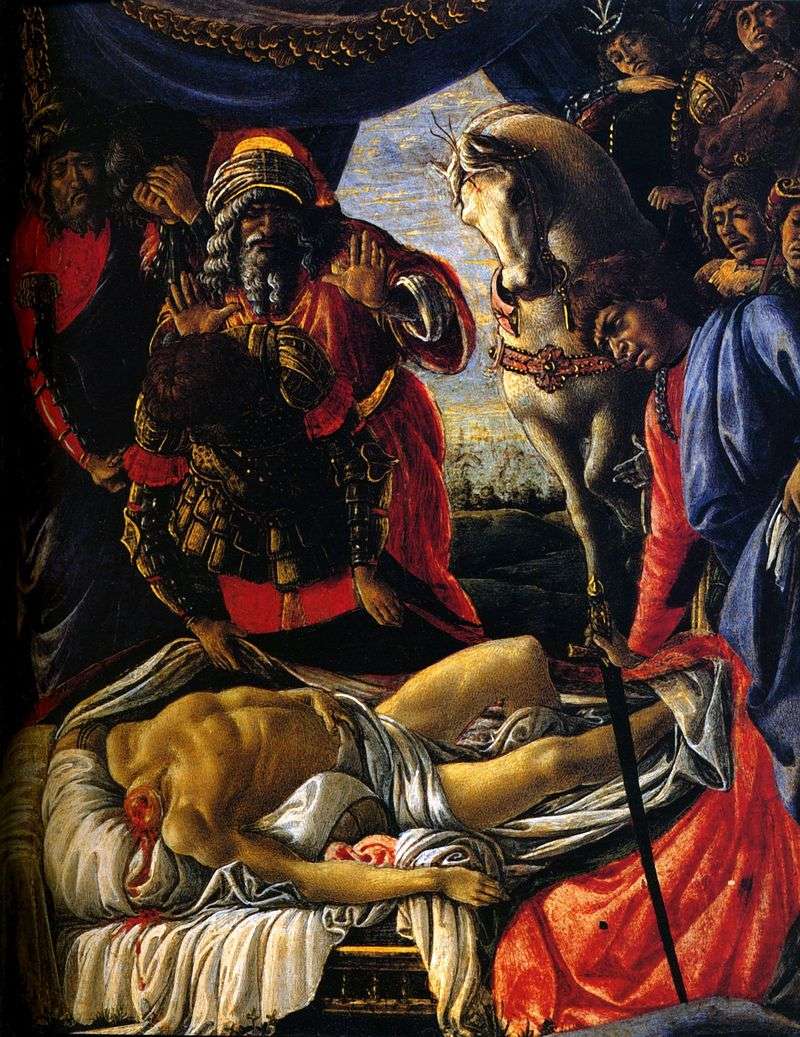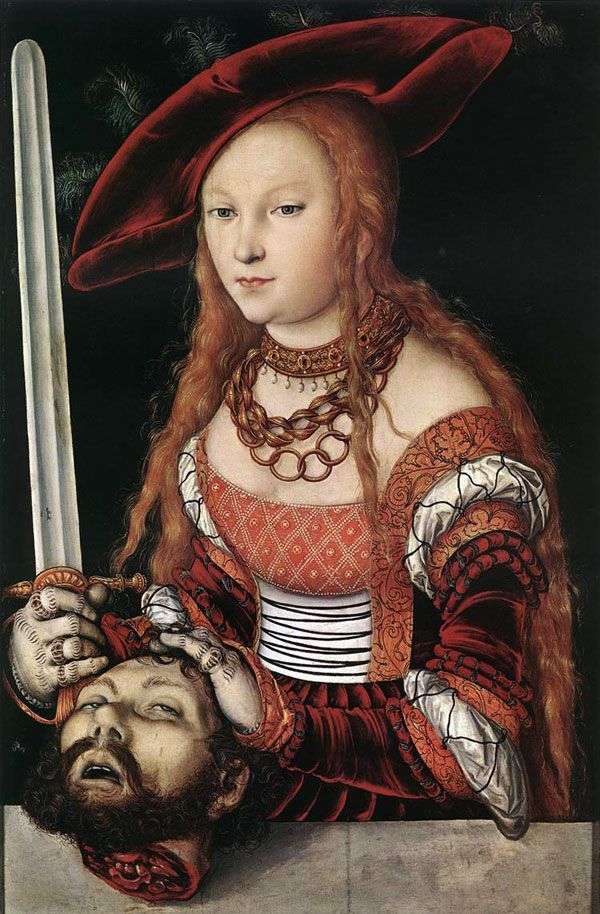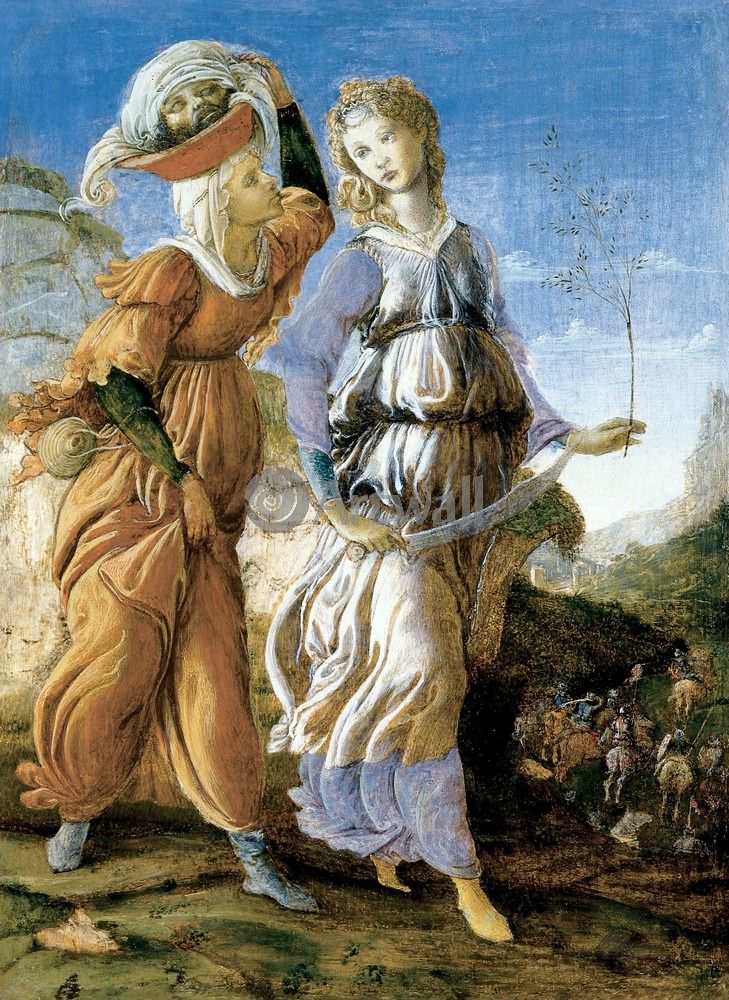
The canvases, released from the brush of the great Italian painter of the Renaissance, Sandro Botticelli, rightfully occupy a place of honor in the world treasury of works of art.
Any picture of Botticelli, whether it was written in the early period of his work or in mature years, amazes the viewer with bright saturated colors, thoughtful composition and living characters, and “Judith” is no exception.
Painting Botticelli “Judith” was painted by the artist in 1472 and is part of the diptych. At the time of the creation of this canvas, Botticelli has already tried himself as a painter: earlier from under his brush came out several paintings with the image of the Madonna. They show the audience the bright talent of a young talent who seeks to find his own style, still imitating the manner of the letters of recognized masters – artists Mazaccio and Lippi.
By the year 1470, Sandro has acquired the style of drawing inherent only to him, and in commemoration of this event opens his own workshop – the place of “birth” of Botticelli’s painting “Judith”. The plot is based on a biblical parable about the feat of Judith, a young widow from the besieged Assyrian king Holofernes of the city of Vetluia. Thanks to her courage and selflessness, the townspeople managed to gain the upper hand over the numerous enemy troops and rid their city of invaders.
Holofernes, who besieged the city, was famous for its cruelty and lasciviousness.
The fate of beautiful women from the conquered cities was unenviable: at best, a monotonous life awaited them in the royal harem, at worst – death. Knowing this, Judith decides to take a desperate step. Convincing the elders not to hurry up with the surrender of the city, the young widow puts on the attire of the courtesan and goes to Holofernes. The king, who saw a beautiful woman, demanded to bring her to her. At night, after the intoxicated Holofernes fell asleep, Judith cut off his head with his sword, and then left the camp, calmly passing by the sleeping guards.
In the picture of Botticelli “Judith” depicted the moment of the return of Judith with a bloody trophy, which bears the city deliverance from the oppression of strangers. The painter in his habitual manner portrayed a girl walking along the path accompanied by a maid. Their steps are swift and easy, the morning breeze blows the folds of the clothes. The face of the young widow is filled with sad contemplation, and her fragile image is supplemented by the symbolic attributes of victory – the olive branch decorating the basket with the head of Holofernes, and the royal sword.
The whole scene is filled with light and air: the space behind the figures of the girls occupies the transparent sky, and only in the distance are the houses visible. Unlike other artists who also referred to this plot and depicted Judith as a bright seductress, Botticelli presented it as a symbol of determination and dedication.
 Judith Beheading Holofernes by Caravaggio
Judith Beheading Holofernes by Caravaggio Finding the body of Holofernes by Sandro Botticelli
Finding the body of Holofernes by Sandro Botticelli Judith by Hans von Aachen
Judith by Hans von Aachen El regreso de Judith a Bethulia – Sandro Botticelli
El regreso de Judith a Bethulia – Sandro Botticelli Judith, killing Holofernes by Michelangelo Merisi da Caravaggio
Judith, killing Holofernes by Michelangelo Merisi da Caravaggio Judith with the head of Holofernes by Lucas Cranach
Judith with the head of Holofernes by Lucas Cranach Judith revient à Vetila – Sandro Botticelli
Judith revient à Vetila – Sandro Botticelli Portrait of Simonetta Vespucci by Sandro Botticelli
Portrait of Simonetta Vespucci by Sandro Botticelli